As a multi-generation Florida native, and a policy wonk, I’ve always had a certain fascination with Tallahassee and a respect for the work that goes on here. On the other hand, I’ve also viewed the state capital as a somewhat strange and alien place, disconnected from the state it leads. That sentiment was reinforced during our visit to the Tallahassee area this week.
For all sorts of reasons, this part of the state just looks and feels nothing like the peninsula. The most obvious difference is the persistent presence of hills. Having traveled all over the Florida peninsula throughout my life, including by car, canoe, kayak, bike, and foot, I can confirm that it’s basically completely flat. The highest point in the entire state is only 345 feet above sea level, and the vast majority of the long, long peninsula is much lower in elevation. Yet Tallahassee is a city of continuously rolling hills, with creeks and rivers carving their way through surprisingly deep gullies. We camped on the west side of town on the shores of the Lake Talquin reservoir, and enjoyed hiking in the adjacent Lake Talquin State Forest. The 300 feet of elevation change we experienced over the course of a 5-mile hike is pretty dramatic for Florida.
The mixed hardwoods in the forest and at our campsite were another revelation. Forests of slash pine and long leaf pine, live oak, and cabbage palms are just so synonymous with Florida, at least in my mind, that an entire forest of deciduous trees seems decidedly weird. Of course, listening to the wind rustle through the leaves of all the trees surrounding our campsite, while the lake lapped at the shore a few feet from our trailer, made me pretty satisfied with the change in scenery.
Tallahassee also seems like a world apart culturally. The community appears to be very homogeneous, and completely lacks the international feel of other Florida cities like Miami and Orlando. Not only is English the only language heard on the streets, it’s also assumed that English will suffice for all communications. In a state where almost a quarter of the residents are Latino, and 20% speak Spanish as a first language, it was surprising to see relatively little evidence of Spanish in retail stores and at governmental offices here in the capital city. In other bizarre facts about the capital of our third largest state, the entire downtown area can be traversed by foot in just a few minutes, many intersections have only stop signs (not signals), and downtown garage parking can be enjoyed for the amazing price of $1 / hour.
No doubt as a result of my work as a regulatory lawyer, I think that the staffers of state regulatory agencies have a major impact on the everyday lives of the citizens of a state. The fact that the daily lived experience of these staff members is so different from that of a typical Floridian gives me pause. Over 80% of Florida’s residents live in one of the 10 largest metropolitan areas in the state — none of which includes Tallahassee or Leon County. Wikipedia tells me that 75% of Florida residents live within 10 miles of a beach, which Tallahassee is not. How can the folks who live and work in this charming southern town really appreciate the issues confronting the state’s citizens, who are generally located in fast-paced, diverse, coastal cities?
On the other hand, maybe there’s something to be said for having state agency staff live a lower-stress lifestyle. If nothing else, the friendliness and helpfulness of the employees we encountered at the several governmental sites we visited is a great trait to have in government workers. The capital’s location is a historical accident; it was selected when the Florida peninsula was virtually uninhabited. In any case, the capital is not going to be moved any time soon, and change will definitely not be prompted by the ramblings of a passing traveler like me.
We wandered around downtown and gawked at the sights, such as the historic and new governmental buildings. Our best destination was the Museum of Florida History, located in the basement of a building occupied by the Florida Department of State that houses the state archives. Admittedly, I was attracted to it mostly because of the subject matter and the fact that admission is free (donations accepted). Despite the inauspicious location, it turned out to have one of the best interpretive sites I’ve ever seen on the complicated topic of Florida’s early history. The disdain I showed for the De Soto Memorial has no place in describing this museum!
The museum includes lots of tactile experiences like replicas of Indian and early European houses, Spanish sailing ships, steamboats, and citrus packing houses that visitors can walk through and touch. There are many, many touch screens with games based on facts in the neighboring displays. There are video and audio components to many of the materials presented, creating an immersive experience. The displays include a huge variety of artifacts, ranging from small pottery shards and Spanish coins to complete dugout canoes and an entire mastodon skeleton (found at Wakulla Springs!) to historic photographs, flags and uniforms.
What I most appreciated is that, in an extensive exhibit dealing with the period 1513-1821, the museum told the story of Florida’s early years with real attention to the multifaceted perspectives of the very diverse people who lived here at the time. There was detailed description of the different Indian communities living throughout Florida at the time of European contact, including a surprising amount of pottery and jewelry artifacts. I was previously under the impression that the vast majority of the goods used by Florida’s native people were made of biodegradable materials and were long gone.
The treatment of the colonial efforts by Spain, France, and Great Britain was very nuanced. Interpretive signs provided insight into the different perspectives, goals, and expectations of the various European powers and the citizens who arrived under the different flags. The displays acknowledged and explained the complicated interactions among the native people, the various colonial powers, the community of free blacks that existed in Florida for hundreds of years, the large population of enslaved people, and the incipient new country (the US) next door, which Florida did not join until 40 years after the American Revolution. Also, the signage for this exhibit dealing with Florida’s early years was all bilingual! I learned in reading materials for this post that this “Forever Changed” exhibit was assembled over several years in connection with the 500th anniversary of Ponce de Leon’s 1513 landing, and the tremendous care and dedication of the curators is apparent.
Other highlights at the museum included displays on the development of the forestry and citrus industries, and a very comprehensive look at the effect of World War II on Florida. Overall, this was a great (and free!) place to spend an afternoon, though it left our brains very full.
As if my swooning over a history museum is not enough to demonstrate my nerd credentials, we made one last and important stop in our journey through Florida history. The most obscure thing we visited in Tallahassee, and yet the one that gave me the most joy, was the Prime Meridian marker. This marker indicates the ultimate point of origin of every land survey performed in the State of Florida. After reading hundreds (thousands?) of surveys over the years, I was insanely excited to visit this spot. Yes, I stood directly on the marker. Yes, I took selfies while doing so. It was awesome.
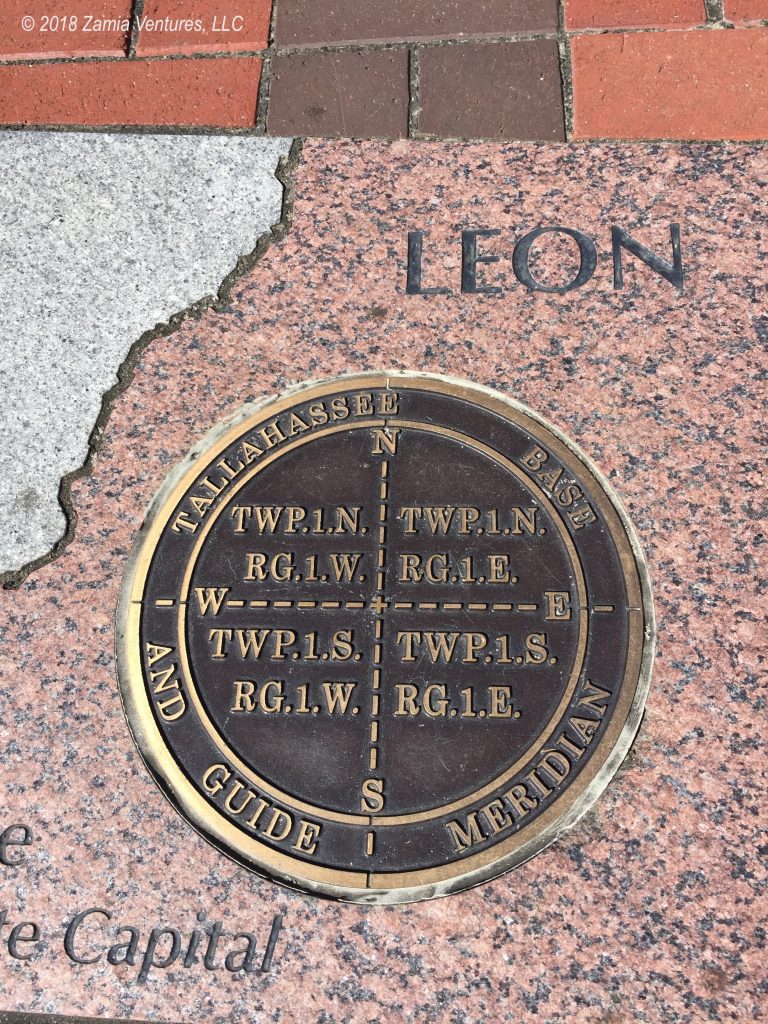
Otherwise, our time in Tallahassee was devoted to daily chores. Tallahassee might seem like a very small town, but it can support a Whole Foods, a Costco, several Home Depots, and other retailers that we visited to stock up on necessary items. Next up: after what seems like weeks of travel, we finally leave the State of Florida.
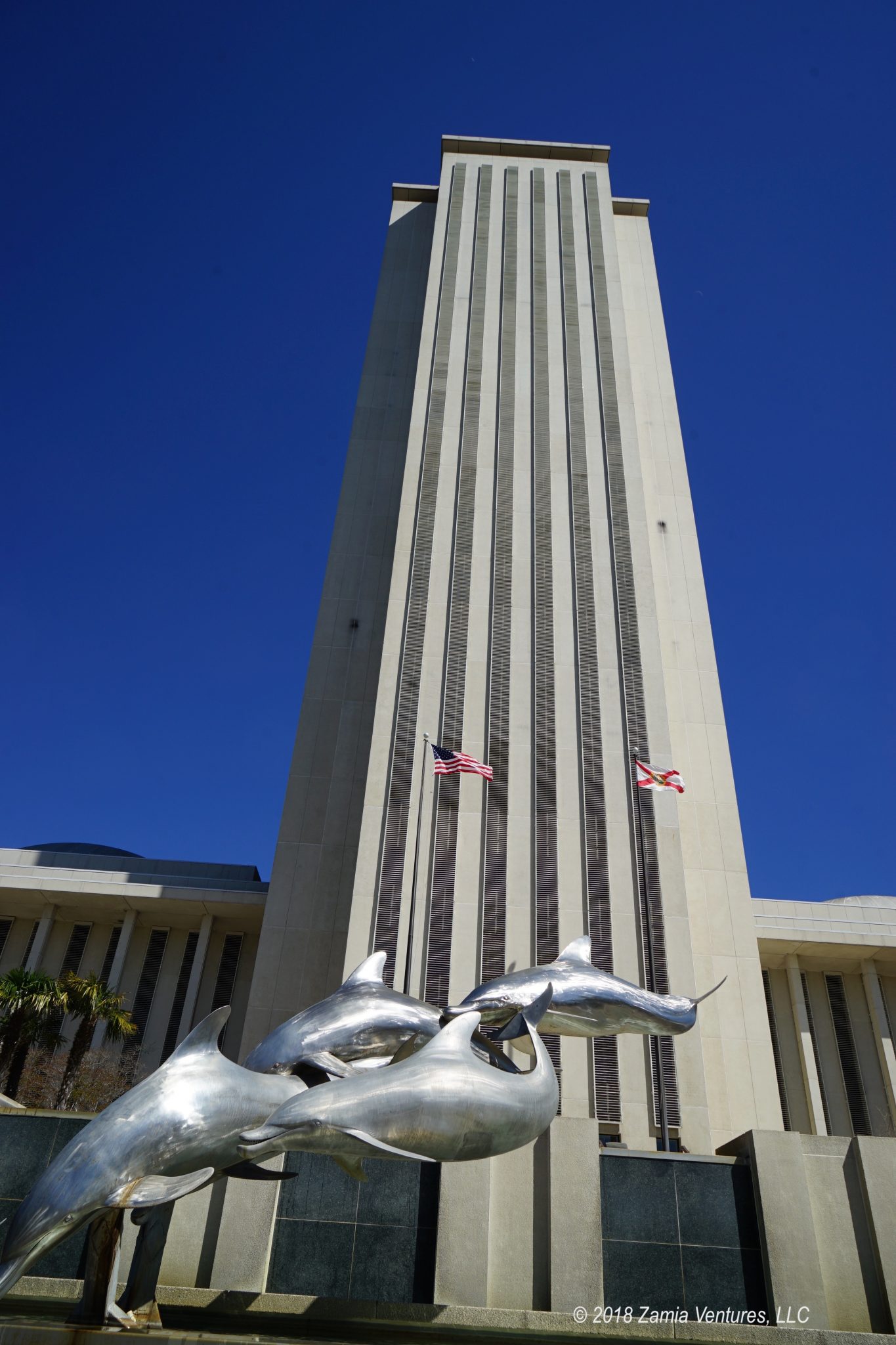
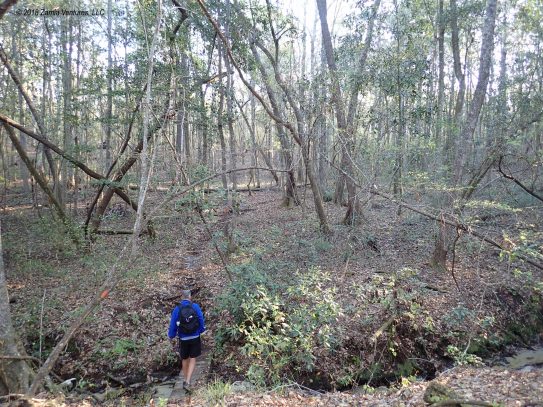
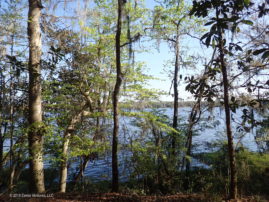
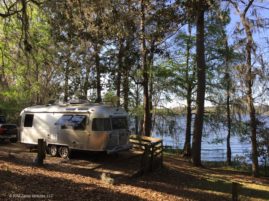
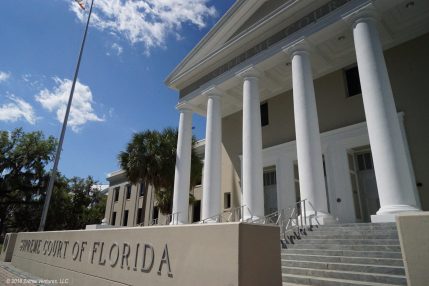
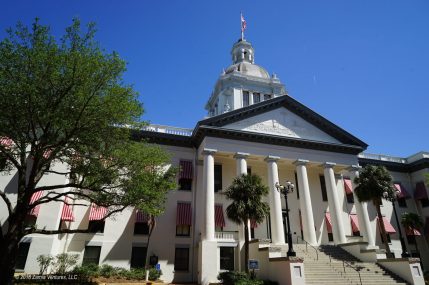
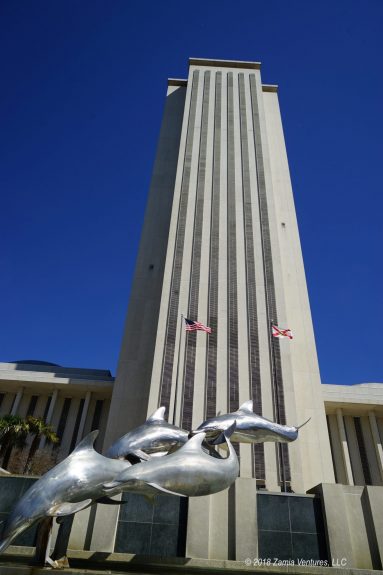
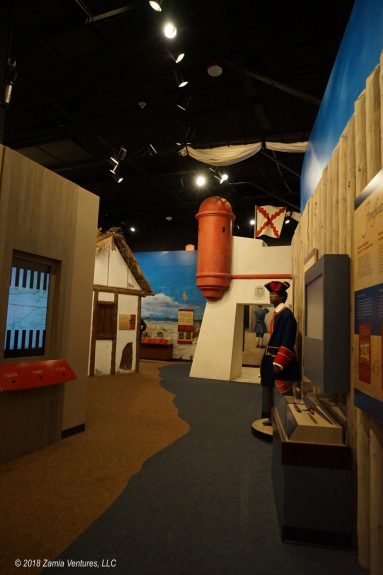
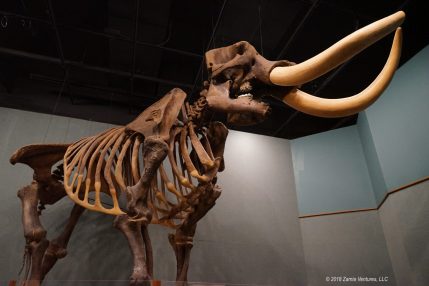
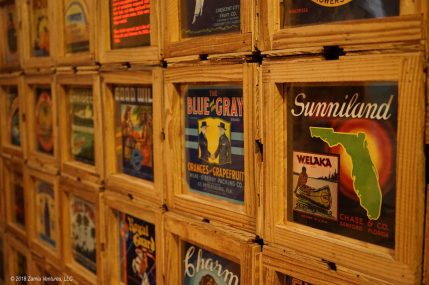
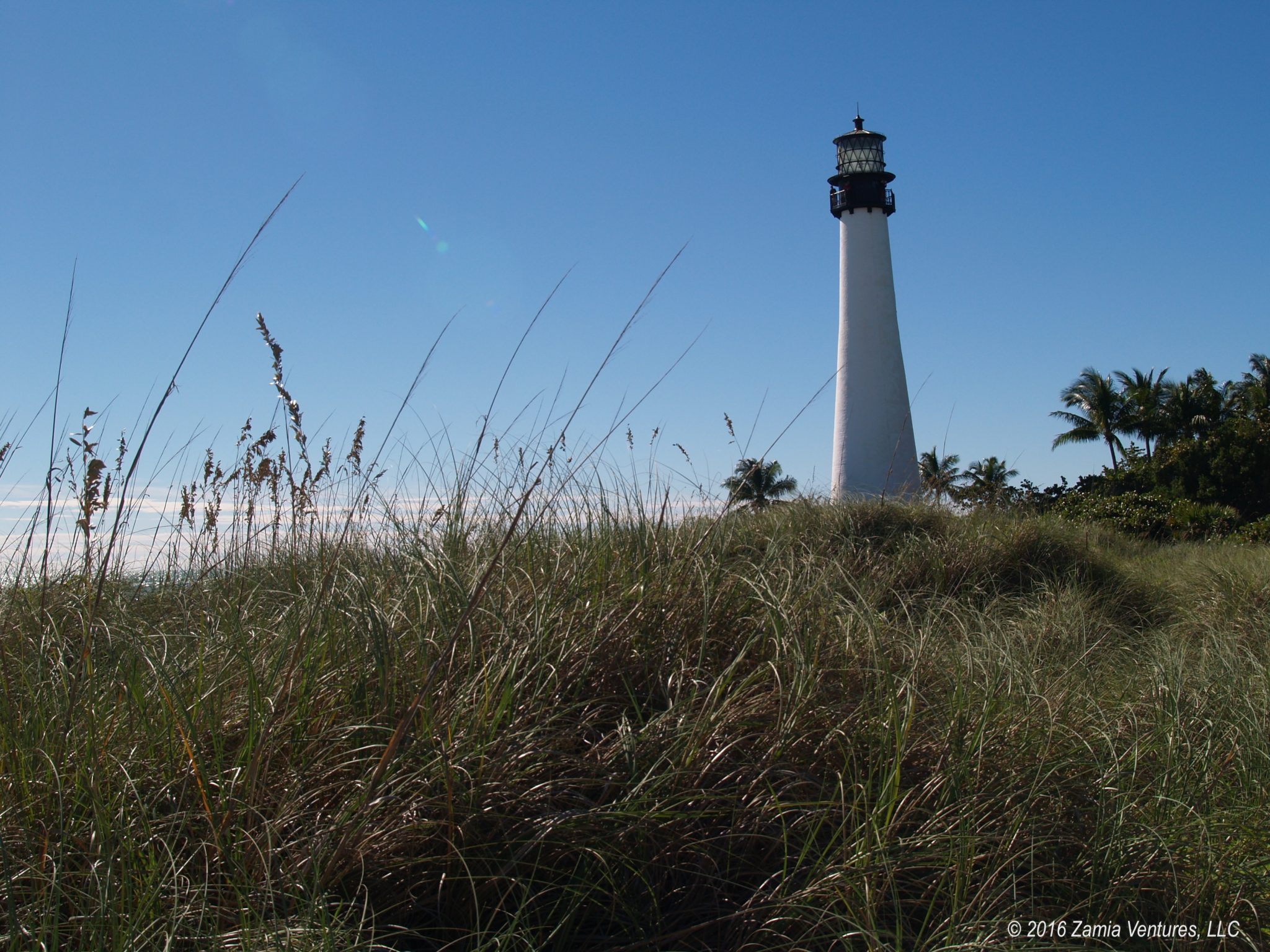
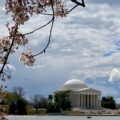
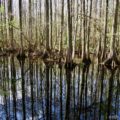
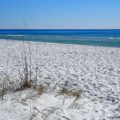
Hi Shannon and Ken,
We’ve been trying to keep up with your adventures. The descriptions and history of the sites brings each location into life.
Never knew that our state capital has so much to offer. Sounds like you are enjoying traversing Florida. Looking forward to reading about your new journeys.
Thanks for following along! We have enjoyed everything we’ve done and seen so far, but we are itching to get out of the state of Florida….
We’re enjoying your descriptive adventures and look forward to more especially when you exit Florida! Thanks for sharing.
We leave Florida tomorrow!
Shannon, I’m so disappointed that you didn’t run into any life-sized cutouts at the capital! That’s what I most look forward to seeing when I read your blog. 😉
Paddy
Well, you know I will be sure to write about them anytime they sneak up on me…. and they definitely stalk me.